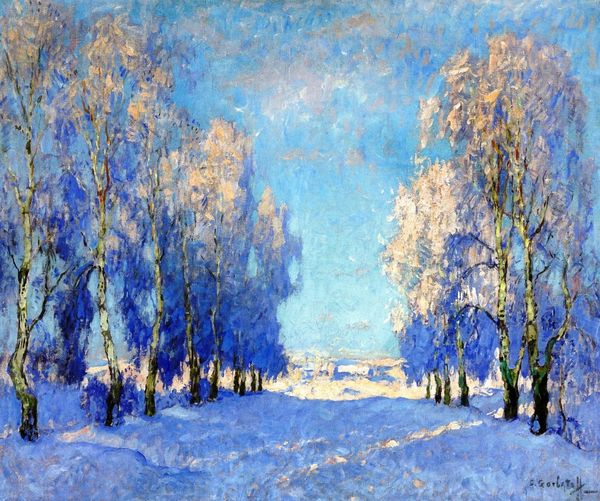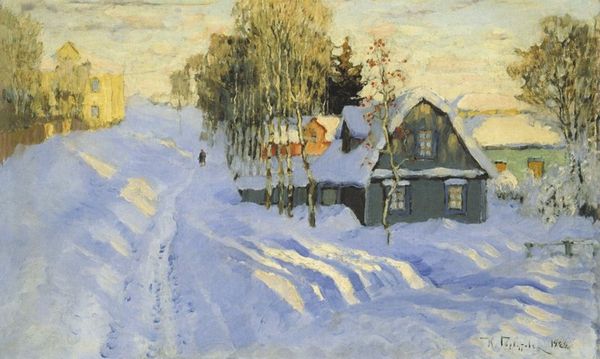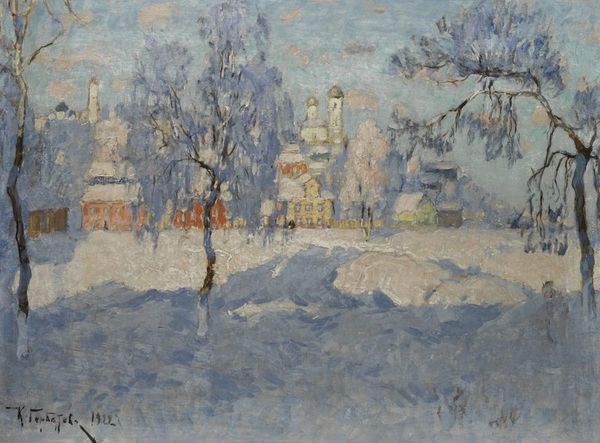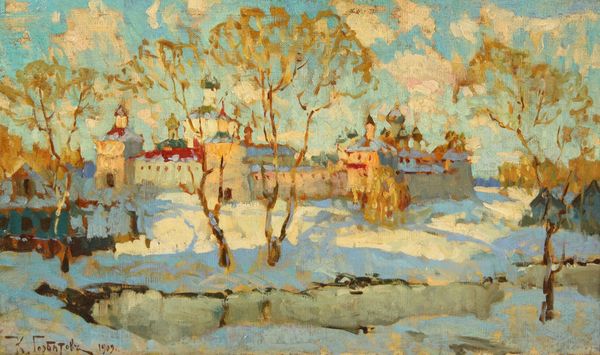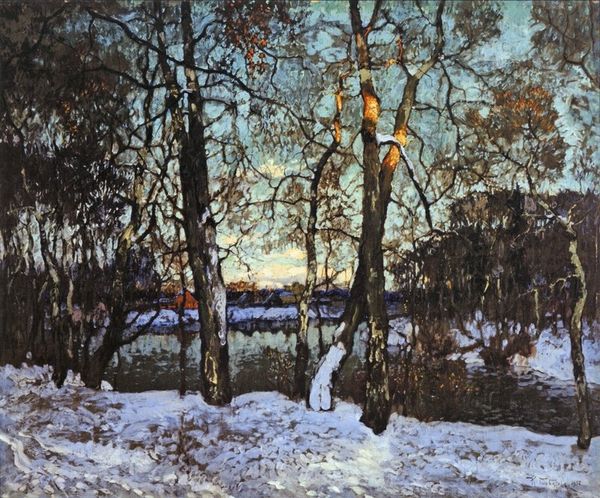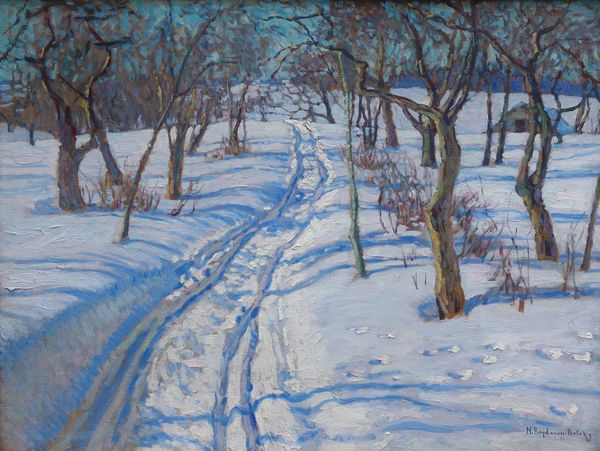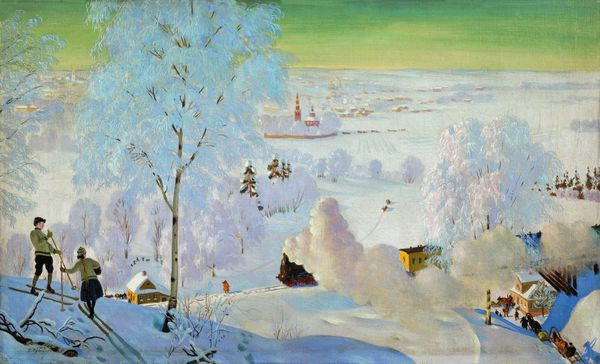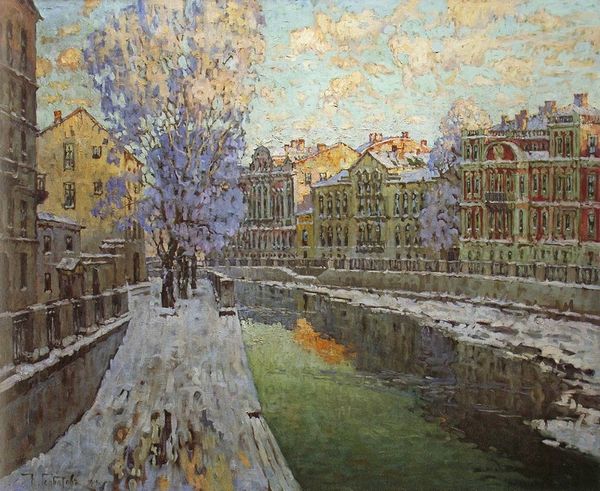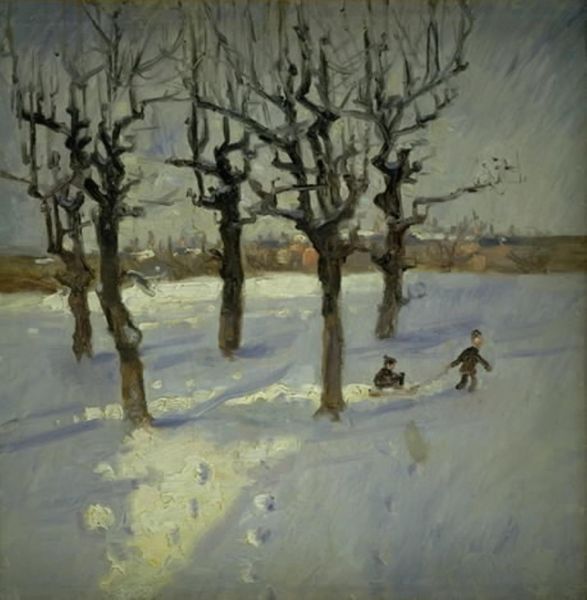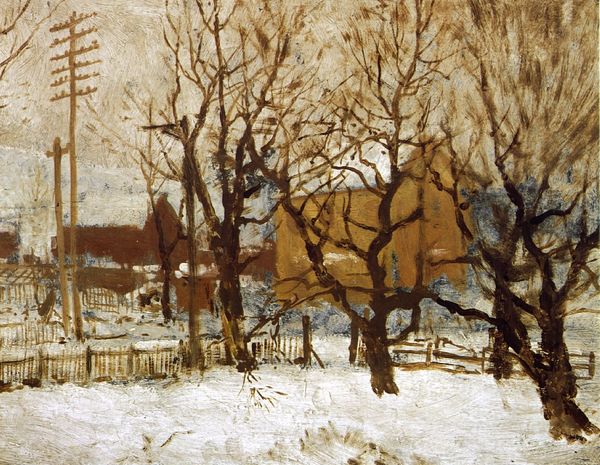
Copyright: Public domain
Curator: Konstantin Gorbatov's "Early Spring in Pskov," painted in 1922, offers us a fascinating glimpse into the artistic currents of early 20th-century Russia. He used oil paint on canvas for this cityscape. Editor: My first impression is one of serene coldness, perhaps even a fragile peace. The blue-tinged snow dominates, yet the strokes are applied with a warmth that hints at the coming spring thaw. It’s a beautiful composition. Curator: Indeed. Gorbatov, who belonged to the Russian avant-garde, navigated a complex socio-political landscape after the Revolution. Works like this landscape presented a tension between embracing new artistic forms and retaining a connection to tradition and heritage. It can be seen as an exercise in reconciling new modern approaches to painting with historical values of a society under construction. Editor: Right. And isn't it interesting how the vibrant yet understated colours contrast with the rather harsh realities of post-revolutionary life? I find myself reflecting on the way the artist may have seen this scene. He was living in a period where artistic expression could serve as an outlet or critique of the ruling power. The inclusion of what looks like a very old church may indicate his conservative sentiments, maybe longing for the 'good old times'. Curator: The cityscape itself becomes a site of negotiation, presenting an interesting interplay of continuity and change in Russian society. It should be noticed that the church here has a great architectural value. These features represent more than simple political position; they express artistic taste within institutional frameworks operating then and after. Editor: I completely agree. The brushwork—notice how impressionistic it is, while maintaining defined structures—creates a beautiful dynamism. It gives a lively feel to a cold landscape, capturing the atmosphere, which feels hopeful and resilient. Curator: It speaks to the endurance of beauty, maybe even hope. He did not completely adhere to Soviet themes of Socialist Realism and yet Gorbatov gained recognition by officials who likely recognized that he found a balance in connecting Soviet society to traditions. This highlights an aspect on art that could not be clearly defined as completely "pro" or "against". Editor: Exactly, there's something subtly subversive here. Curator: Thinking about the historical moment, this painting is much more than an idyllic cityscape; it represents cultural adaptation, a symbol that has to be decrypted with an historic-critical attitude. Editor: Ultimately, it’s this ambiguity and the striking blend of realism and impressionism that make this painting so incredibly compelling. It has plenty to reveal!
Comments
No comments
Be the first to comment and join the conversation on the ultimate creative platform.


